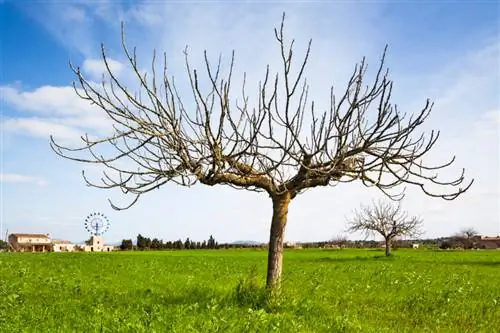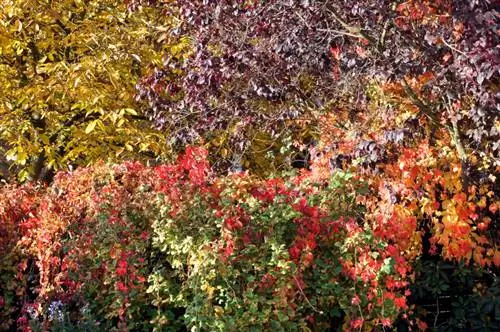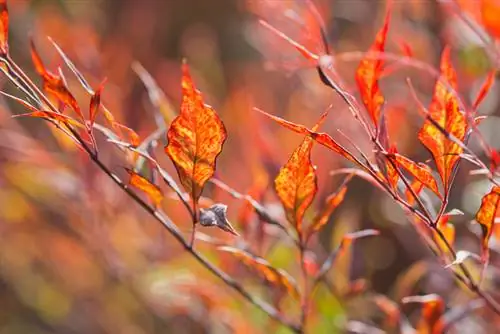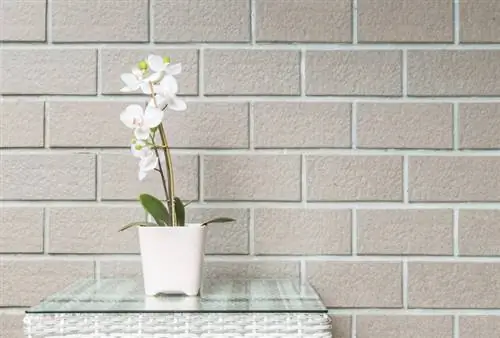- Author admin [email protected].
- Public 2023-12-16 16:46.
- Last modified 2025-01-23 11:20.
Certain diseases and other problems - such as leaf drop - are typical for oleander. The popular ornamental shrub is quite delicate when it comes to care and reacts quickly to mistakes or carelessness. As sensitive as oleander is when it comes to a lack of water or nutrients, it can cope well with these negligences - as long as they are remedied quickly. Oleander likes to acknowledge a lack of water or insufficient fertilizer application by shedding its leaves.
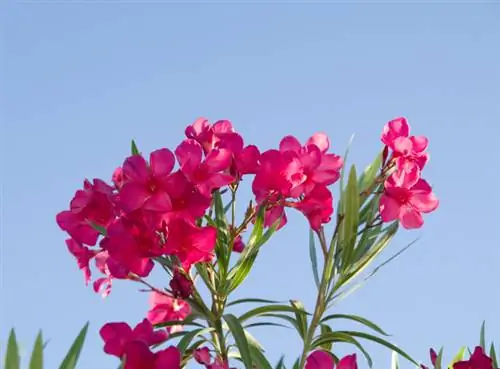
Why does the oleander lose its leaves?
Oleander often loses leaves due to lack of water, incorrect watering behavior, insufficient fertilization or the natural aging process. To counteract this, you should ensure sufficient irrigation, appropriate fertilization and regular pruning.
Oleander generally sheds leaves after about two years
However, not every leaf drop has a pathological cause, because the oleander leaves generally only live for about two years and are then dropped due to old age. Before that, however, the bush deprives them of all the nutrients it contains, so that they become completely yellow and spotty. This type of leaf drop occurs when only a few leaves are affected. In very warm and dry summers, however, it can also happen that the oleander suddenly throws away all of its older leaves at once and suddenly becomes almost bare.
Common causes of leaf shedding
Incorrect watering and/or fertilization also leads to the leaves falling off, although they often turn yellow beforehand. In contrast to shedding due to age, the lower leaves fall first, so that the oleander becomes bare from below. Sometimes it sheds the leaves in such a way that there are only leaves left at the tips of the shoots.
Too much or too little water
In most cases, inadequate watering is responsible for leaf drop. In this case, the leaves and shoots dry up, and they are not always shed. Watering oleander properly is not that easy: in the warm summer months you can water the shrub heavily so that there is water in the pot saucer. However, this is only advisable if the oleander is actually in the blazing sun. If, on the other hand, it is in a bright but not directly sunny location, it is better not to get its feet wet. In winter, however, it is sufficient to water the oleander about once a month - provided it is bright and cool at a maximum of five degrees Celsius. The warmer the plant is overwintered, the more light and water it needs.
Inadequate fertilization
Leaves turning yellow and falling off can also be an indication of incorrect and/or insufficient fertilization. Oleanders are extremely heavy feeders and therefore need to be regularly supplied with nutrients. Ideally, you have mixed the plant substrate with a slow-release fertilizer and give the plant additional nutrients via a liquid flowering plant fertilizer. Be sure to follow the manufacturer's instructions, as over-fertilization can have fatal consequences.
Tip
You can counteract the gradual baldness from below by cutting back the oleander every spring. This makeover ensures denser branching and strong foliage.


